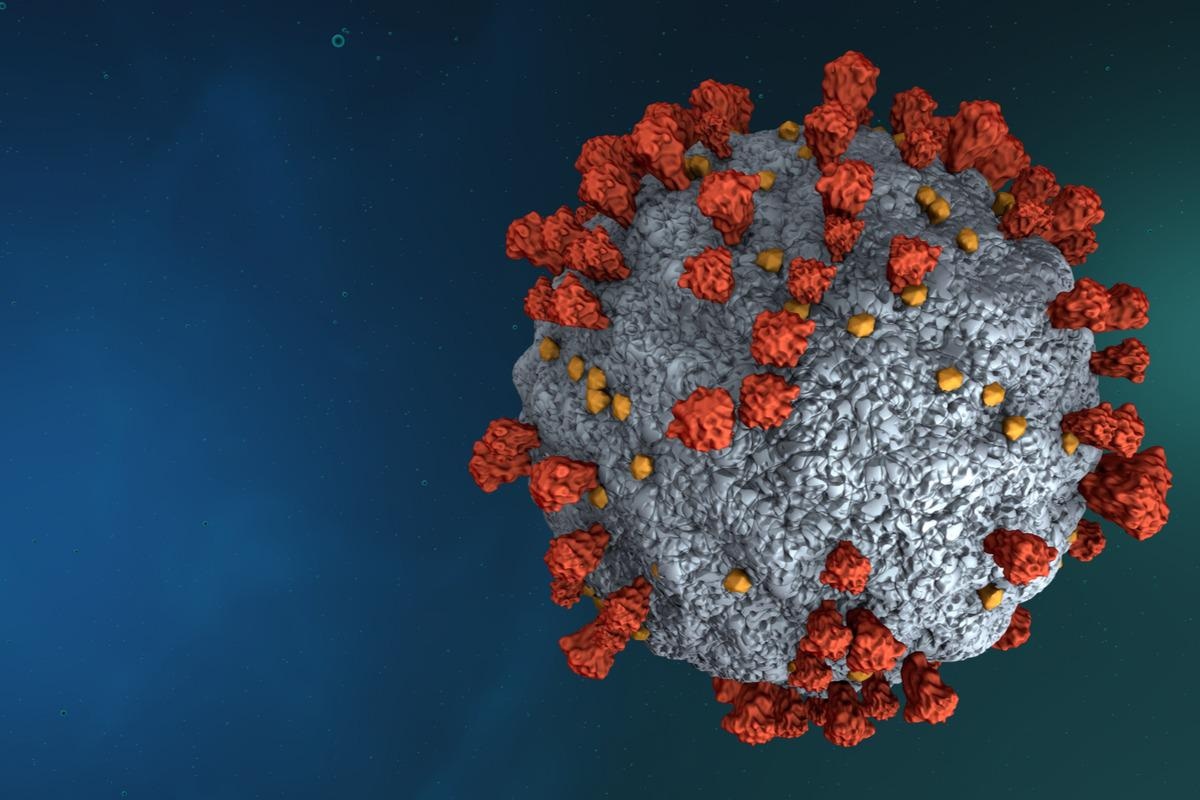The ongoing coronavirus disease 2019 (COVID-19) pandemic, caused by severe acute respiratory syndrome coronavirus-2 (SARS-CoV-2), has massively affected the global healthcare system and economy. SARS-CoV-2 is a large, enveloped, single-stranded RNA virus that belongs to the family Coronaviridae of the genus Betacoronavirus (β-CoV).
 Study: Prion-like Domains in Spike Protein of SARS-CoV-2 Differ across Its Variants and Enable Changes in Affinity to ACE2. Image Credit: CROCOTHERY/Shutterstock
Study: Prion-like Domains in Spike Protein of SARS-CoV-2 Differ across Its Variants and Enable Changes in Affinity to ACE2. Image Credit: CROCOTHERY/Shutterstock
Background
Besides SARS-CoV-2, other members of the coronavirus family that have caused epidemics and claimed numerous lives are severe acute respiratory syndrome (SARS) and the Middle East respiratory syndrome (MERS). However, coronaviruses, such as common cold, human coronavirus OC43 (HCoV-OC43), and human coronavirus HKU1 (HCoV-HKU1) are non-life threatening.
All these viruses chiefly infect epithelial cells of the lungs; however, the clinical severity and pathogenesis differ between coronaviruses. For instance, pulmonary fibrosis and severe pneumonia are associated with SARS-CoV-2, SARS, and MERS, but HCoV-OC43 and HCoV-HKU1 do not cause these symptoms.
Similar to other β-CoVs, SARS-CoV-2 encodes four structural proteins, namely, the spike (S), envelope (E), membrane (M), and nucleocapsid (N) proteins. The key determining factor of the host specificity of β-CoVs is the S protein, which is also involved with facilitating viral entry into the host cell.
The S protein contains two large domains, i.e., the N-terminal S1 and C-terminal S2. S1 region contains the receptor-binding domain (RBD), which detects and binds to the angiotensin-converting enzyme 2 (ACE2) receptor of the host cell, whereas S2 promotes membrane fusion.
Previous research has shown that the genomic variability of S1 is higher than S2, i.e., the S2 region is highly conserved. Previous studies have shown that compared to SARS-CoV, SARS-CoV-2 has a higher binding affinity to ACE2 of the host.
Since the beginning of the pandemic, many SARS-CoV-2 variants have emerged due to genomic mutations. Some of the SARS-CoV-2 variants have exhibited higher transmission rates, virulence, and shown the ability to evade immune responses induced via immunization or natural infection. These variants have been classified as variants of concern (VOC) and variants of interest (VOI) by the World Health Organization.
Prion-like domains (PrDs) are highly associated with virus-host cell interactions. Although the molecular mechanisms behind prion formation are not clear, researchers found that the prion formation is driven by hydrophobicity, which is characterized by the presence of asparagine (Q)- and glutamine (N)-rich regions, and net sequence charge. Several PrDs predictive algorithms are available, for example, prion-like amino acid composition (PLAAC) analysis. This algorithm allows the analysis of PrDs based on the hidden Markov model (HMM). To date, there is scarcity in research associated with the prionogenic properties of SARS-CoV-2.
A new study
Scientists have recently detected and analyzed viral PrDs in the S protein of SARS-CoV-2, which are the novel regulators of virion assembly. They also compared them with the PrDs of other human-pathogenic β-CoVs. The study has been published in Microorganisms. Researchers also determined PrDs in the S protein of the SARS-CoV-2 variants such as B.1.617.2 (Delta), B.1.1.529 (Omicron), B.1.1.7 (Alpha), B.1.351 (Beta), P.1 (Gamma), B.1.427 (Epsilon), B.1.617.1 (Kappa) and P.2 (Zeta).
The findings of this research are in line with previous studies that analyzed the pathological function of prions in humans (e.g., Alzheimer’s and Parkinson’s diseases, and diabetes). Scientists have stated that protein misfolding plays an important part in both prokaryotes and eukaryotes. For the current study, researchers used the ratio of the high threshold of the PLAAC score for protein identification and only proteins with a high probability of prionogenic properties. They observed that even though different β-CoV members contain PrDs in the S proteins, SARS-CoV-2 was the only coronavirus that contained PrD in the RBD of the S protein.
Scientists discovered specific amino acids, i.e., Q474, N481, Q493, Q498, and N501, that allow the prionogenity of the SARS-CoV-2 RBD, which interacts within ACE2. Previous studies have investigated the atomic interaction of SARS-CoV-2 and ACE2 and detected several prion-like segments that exhibited pairwise interactions within the intrinsic disorder. The authors stated that as PrDs are only present in the RBD of SARS-CoV-2, their presence must benefit the virus.
The current study provided proof of this concept, revealing that the presence of PrDs in the RBD of SARS-CoV-2 increases the affinity of the virus to bind to the ACE2 receptor of the host. Scientists also revealed that among all the SARS-CoV-2 variants studied, the highest log-likelihood ratio scores were observed in the S protein of the SARS-CoV-2 Delta variant. This finding is significant because the Delta variant exhibits a high transmission rate. Additionally, this variant has been associated with higher mortality and hospitalization.
Conclusion
The authors stated that the current study is the most complete evaluation of PrDs in the S protein of SARS-CoV-2 variants. However, more analysis associated with the PrD-containing proteins in SARS-CoV-2 is required to understand COVID-19 infection better. This study has provided new perceptions regarding the pathophysiology as well as novel targets that could be used to develop effective COVID-19 therapeutics and vaccines.
Journal reference:
-
Tetz, G. and Tetz, V. (2022) "Prion-like Domains in Spike Protein of SARS-CoV-2 Differ across Its Variants and Enable Changes in Affinity to ACE2", Microorganisms, 10(2), p. 280. doi: https://doi.org/10.3390/microorganisms10020280.